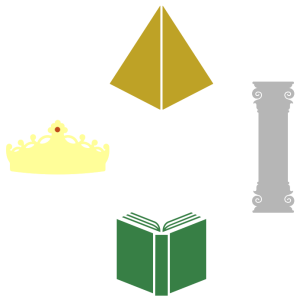Artifact
 The term artifact comes from Latin and is derived from ars/ arte „art, craft/with skill“ and factum „the made“. It refers to man-made objects and expressions. Expressions can be represented as symbols and symbolic actions (see Harris 1989).
The term artifact comes from Latin and is derived from ars/ arte „art, craft/with skill“ and factum „the made“. It refers to man-made objects and expressions. Expressions can be represented as symbols and symbolic actions (see Harris 1989).
Prehistory
In the prehistoric context, an artifact is a „stone that has acquired tool character through processing; artificially produced utilitarian object; also, the cuttings in stone working“ (Brockhaus).
Artifacts in cultural context
„Culture is arranged onion-like in different layers. Whereby each layer conditions – and thus influences – the other“ (Dahl 2000). In Spencer-Oatey’s cultural onion model, artifacts are found in the outer layer and represent „the obvious signs of culture“ (Dahl 2000), „which are externally visible and symbolize the values and norms of society“ (M. A. R. E. 2005).
Despite these obvious signs, the culture-dependent meanings demand a high level of attention. In addition, one should be aware of the linguistic, religious, and cultural environment in which one is currently situated, as symbols and symbolic actions may have different meanings in other cultures than they have for us.
Different meanings
An example of the different meanings for symbols is the sign we make with our thumb and index finger to form the O for Okay. This sign has three additional meanings in an intercultural context. In France, for example, it is used to express that something is worthless (cf. Ani 2017). In Latin America, Russia, and Eastern Europe, on the other hand, the gesture represents „an evil insult that mocks homosexuals in a discriminatory way“ (Dorscheid). In some areas of Europe, this sign is also used to insult one’s counterpart. For example, in Western European countries it is common to associate the color white with innocence and purity, while in East Asian countries this color stands for mourning (cf. Colors and Life).
Literature:
Brockhaus Reference Works (2019): https://brockhaus.de/ecs/enzy/article/ artifact-prehistory [26 Feb 2019].
Dudenverlag: https://www.duden.de/rechtschreibung/Artefakt [09.03.2019].
Colors and Life – Online (o. J.): the color understanding of the Chinese. http:// www.farbenundleben.de/kultur/farbverstaendnis.html [06.03.2019].
M. A. R. E. (2005): Guide Implementing Intercultural Competence in the Everyday Workplace.
of administrations and organizations. https://www.frankfurt.de/sixcms/ media.php/738/guide-intercultural-competence.pdf [06.03.2019].
Dorscheid, Kathrin (n.d.): Culture with a difference: gestures from around the world. https:// www.geo.de/geolino/mensch/6703-rtkl-gestik-kultur-mal-anders-gesten-aus- aller-welt [26.02.2019].
Harris, M. (1989): Cultural anthropology. A textbook. Frankfurt/ Main: Camp Dahl, Stephan (2000): Intercultural Skills for Business, ECE, London. http:// www.intercultural-network.de/einfuehrung/thema_kultur.shtml [26/02/2019].
Ani (2017): Intercultural communication: interpreting facial expressions, gestures and body language correctly, https://www.stepin.de/weltneugier/die-kulturen-dieser-erde- facial-gestures-and-body-language/ [09.03.2019].
